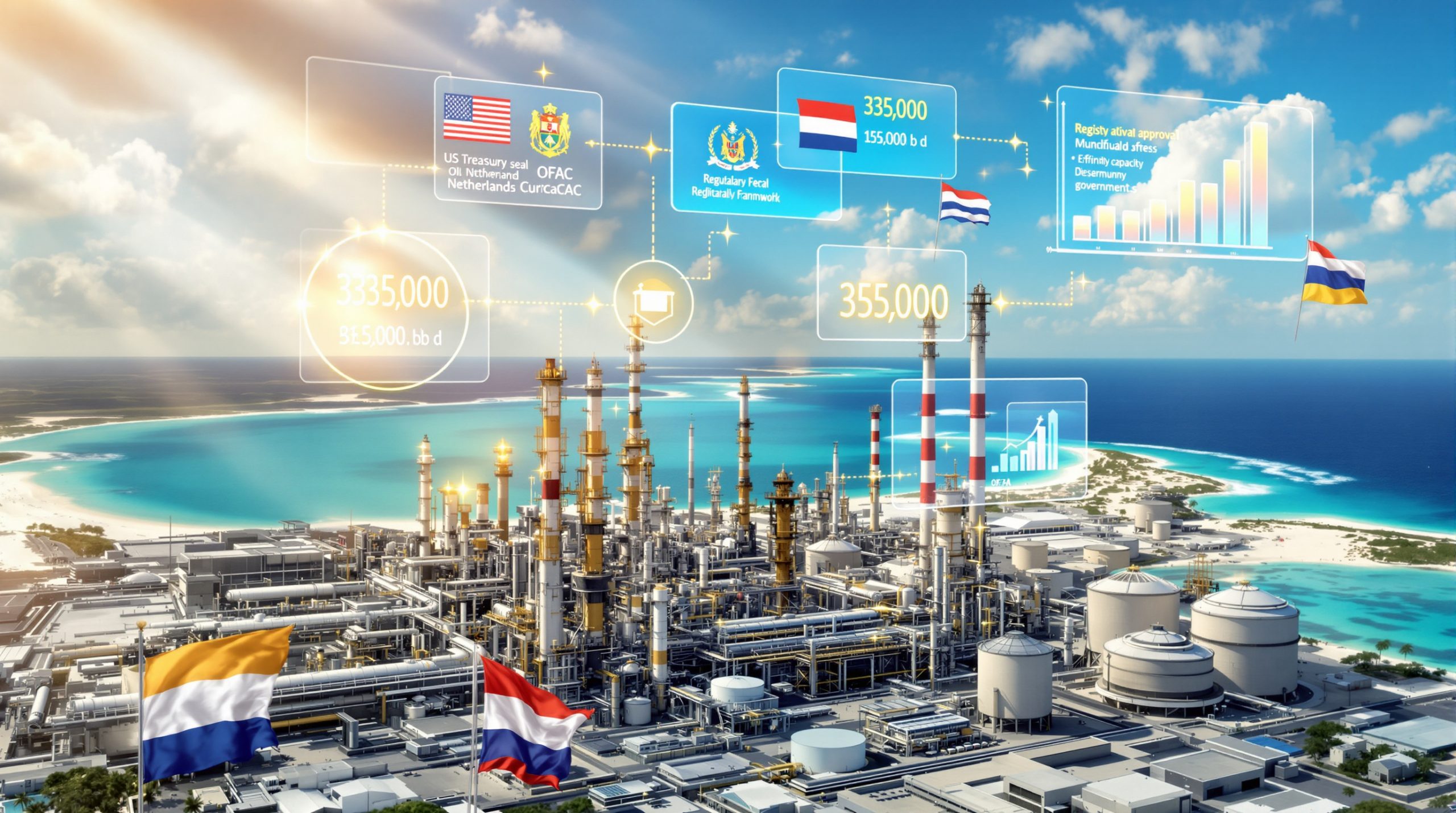The Geological Foundation of Australia's Emerging Critical Minerals Dominance
The global energy transition has created an unprecedented scramble for critical minerals, with nations worldwide recognising that control over these resources will determine economic and strategic positioning through 2030 and beyond. Australia's role in critical minerals industry finds itself uniquely positioned at the centre of this transformation, possessing not just abundant resources but the geological diversity that spans much of the periodic table's most sought-after elements.
Australia's mineral endowment represents billions of years of geological processes that concentrated critical elements into commercially viable deposits. The continent's Archean cratons, particularly in Western Australia, host world-class lithium pegmatites that have propelled the nation to become the globe's largest lithium producer. These ancient geological formations, combined with more recent sedimentary and volcanic sequences, create a mineral inventory that includes 31 elements on Australia's official critical minerals strategy list.
Pegmatite Fields and Rare Earth Concentrations
The spodumene-rich pegmatites of Western Australia's Pilbara and Goldfields regions represent some of the world's highest-grade lithium deposits. These formations, created through complex magmatic processes, concentrate lithium to levels exceeding 1.5% lithium oxide, making them economically superior to many brine deposits that require extensive processing and water resources.
Australia's rare earth element deposits, while less developed than lithium operations, contain significant concentrations of neodymium, dysprosium, and other elements essential for permanent magnets in wind turbines and electric vehicle motors. The Mount Weld deposit in Western Australia, for instance, contains rare earth oxide concentrations exceeding 10%, among the highest globally.
Polymetallic Systems Creating Economic Synergies
Many Australian critical mineral deposits contain multiple valuable elements within single ore bodies, improving extraction economics through shared infrastructure and processing costs. Furthermore, these polymetallic systems often include:
- Lithium-cesium-tantalum associations in pegmatite fields
- Rare earth elements with thorium and uranium in carbonatite complexes
- Cobalt and nickel co-occurrence in laterite deposits
- Vanadium-titanium combinations in magnetite ores
This geological diversity provides Australian operations with revenue diversification that single-mineral deposits cannot match, enhancing project economics even during commodity price volatility.
Economic Forces Accelerating Australia's Critical Minerals Development
The convergence of technological advancement, climate policy, and geopolitical tensions creates demand dynamics unlike any previous commodity cycle. Electric vehicle adoption alone could drive lithium demand increases of 400-600% by 2030, while renewable energy infrastructure requires substantial quantities of rare earth elements that China currently dominates in processing.
Battery chemistry evolution increasingly favours high-purity lithium compounds that Australia's hard-rock spodumene operations can provide more easily than brine-based production. In addition, the shift toward lithium iron phosphate and next-generation solid-state batteries demands consistent chemical specifications that Australia's mining industry innovation can deliver through established quality control systems.
Defense and Technology Sector Demand Acceleration
Military applications create demand for specialised grades of critical minerals that command premium pricing. Advanced radar systems, missile guidance technologies, and satellite communications require rare earth elements with purity levels exceeding 99.9%. Australia's role in critical minerals industry extends beyond commercial applications to strategic defence partnerships that prioritise supply security over cost optimisation.
The semiconductor industry's expansion, driven by artificial intelligence and data centre growth, creates additional demand vectors for materials like gallium, germanium, and high-purity silicon. These applications often require mineral grades and specifications that favour Australia's established quality control systems over lower-cost alternatives.
Corporate Procurement Strategy Shifts
Multinational corporations increasingly implement supply chain diversification strategies that move beyond traditional cost-based sourcing models. Environmental, social, and governance considerations now influence procurement decisions, favouring Australian operations that meet Western sustainability standards over alternatives with lower environmental compliance.
This procurement evolution creates long-term contract opportunities for Australian producers, providing revenue stability that supports capital-intensive processing facility development. Major automotive manufacturers and battery producers actively seek supply agreements extending 5-10 years to secure critical mineral access.
Strategic Partnership Architecture Amplifying Australia's Global Position
Australia's bilateral and multilateral critical minerals agreements create institutional frameworks that extend far beyond traditional buyer-seller relationships. These partnerships encompass technology transfer, joint research initiatives, and coordinated supply chain development that positions Australia as a strategic ally rather than merely a commodity supplier.
The recent framework agreement with the United States represents a USD $2 billion combined investment commitment that includes matched funding requirements ensuring mutual commitment from both nations. This structure creates institutional mechanisms for long-term cooperation that transcend electoral cycles and political changes.
Technology Transfer and Research Collaboration Mechanisms
International partnerships provide Australian companies access to advanced processing technologies previously restricted to domestic use in partner countries. Joint research and development initiatives target next-generation extraction methods, including direct lithium extraction technologies and rare earth separation processes that could reduce processing costs by 30-40%.
These technology partnerships also include intellectual property sharing agreements for breakthrough innovations, allowing Australian companies to participate in global technology development rather than remaining dependent on technology imports. University collaborations with institutions like the Colorado School of Mines and Germany's Helmholtz Institute create knowledge transfer pathways that benefit Australia's developing processing sector.
European Union Integration Strategies
Australia's declaration of intent with the European Investment Bank strengthens cooperation on critical raw materials through structured financing mechanisms that support project development across the supply chain. European partnerships focus particularly on sustainable extraction methods and circular economy principles that align with EU regulatory requirements.
The European Union's Critical Raw Materials Act creates preferential treatment for strategic partnerships, potentially providing Australian producers with expedited market access and reduced regulatory barriers. This framework particularly benefits rare earth and battery mineral projects that meet EU sustainability criteria.
Processing Capabilities Gap and Value Chain Integration Challenges
Despite controlling significant raw material production, Australia captures minimal value from downstream processing activities that generate the highest margins in critical mineral supply chains. China's dominance in rare earth processing, controlling approximately 85% of global separation capacity, and 60% of lithium refining creates strategic vulnerabilities for Western supply chains while limiting Australia's value capture.
The economic barriers to downstream development include capital intensity requirements that often exceed USD $500 million for rare earth separation facilities and USD $200-400 million for lithium hydroxide plants. These investments require specialised equipment, technical expertise, and regulatory approvals that can extend project timelines by 3-5 years.
Competitive Disadvantage Analysis in Processing
Australian energy costs exceed Chinese equivalents by 40-60% for energy-intensive processing operations, while environmental compliance adds 15-20% to operational expenses compared to jurisdictions with less stringent regulations. Skilled workforce shortages in specialised metallurgy limit expansion capabilities, particularly for rare earth separation processes requiring specific technical knowledge.
However, these disadvantages may diminish as Western nations implement carbon pricing mechanisms and supply chain due diligence requirements that favour Australian operations meeting higher environmental and social standards. The true cost competitiveness calculation increasingly includes supply chain security premiums that Australian processors can command.
Infrastructure Development Requirements
Processing facility development requires substantial infrastructure investments beyond the plants themselves. However, rare earth separation facilities need:
- Specialised waste management systems for radioactive byproducts
- Water treatment facilities for process chemicals and tailings
- Power infrastructure capable of handling 50-100 MW loads
- Transportation links for both raw materials and finished products
Lithium processing faces different infrastructure challenges, including access to industrial-grade water supplies and chemical storage facilities for sodium hydroxide and sulfuric acid used in conversion processes.
Policy Mechanisms and Government Support Frameworks
The Australian government's Critical Minerals Strategy and National Reconstruction Fund provide coordinated support mechanisms addressing competitive disadvantages through targeted incentives, infrastructure investment, and regulatory reform. These policies recognise that market forces alone cannot overcome the first-mover advantages and scale economies that established processing centres possess.
Energy cost mitigation strategies include development of renewable energy zones specifically designed for energy-intensive processing operations. Long-term power purchase agreements at competitive rates, combined with grid infrastructure investments to support industrial loads, could reduce the energy cost disadvantage that currently limits Australian processing competitiveness.
Skills Development and Workforce Creation
University partnerships for specialised metallurgical engineering programmes address the technical expertise shortage that constrains processing sector expansion. International talent attraction schemes target experienced professionals from established processing regions, while apprenticeship programmes create pathways linking mining companies with processing facilities.
These workforce development initiatives require 5-7 year timeframes to generate significant skilled worker increases, making immediate implementation crucial for supporting processing capacity expansion through the late 2020s.
Regulatory Framework Optimisation
Streamlined approval processes for strategic critical mineral projects could reduce project development timelines by 12-18 months while maintaining environmental protection standards. Regulatory sandboxes for innovative processing technologies allow testing of new methods without full-scale regulatory approval, accelerating technology adoption.
Environmental impact assessment reforms specifically addressing critical mineral processing could provide clarity for investors while ensuring appropriate environmental protection. These reforms particularly benefit rare earth processing facilities that face complex regulatory requirements due to radioactive element handling.
Geopolitical Tensions and Strategic Market Positioning
The intersection of great power rivalry and critical mineral supply chains creates both opportunities and risks for Australian producers. Recent Chinese export restrictions on gallium and germanium demonstrate how critical minerals become tools of economic statecraft, while US-China trade tensions accelerate Western supply chain diversification efforts.
Australia benefits from being positioned as a reliable democratic ally with stable regulatory systems and strong rule of law protections for foreign investment. Furthermore, this strategic positioning commands premium pricing from Western buyers seeking supply security, particularly for defence and high-technology applications.
Export Control Regimes and Supply Chain Security
The expansion of export control regimes to include critical minerals creates market segmentation between aligned and non-aligned nations. Australian producers gain preferential access to Western markets while potentially losing access to Chinese processing capacity and technology.
This market segmentation requires Australian companies to develop parallel supply chains serving different geopolitical blocs, increasing operational complexity while creating opportunities for premium pricing in security-conscious markets.
Technology Transfer Restrictions and Innovation Impacts
Restrictions on technology transfer between competing powers affect Australian companies differently depending on their partnership strategies. Companies aligned with Western technology partners gain access to advanced processing methods while potentially losing access to Chinese innovations in extraction and processing efficiency.
The balance between technological access and market access requires careful strategic positioning that maximises benefits from both Western partnerships and Chinese market opportunities where possible.
Investment Landscape and Opportunity Analysis
The convergence of government support, international partnerships, and growing demand creates multiple investment vectors across Australia's critical minerals value chain. From early-stage exploration through downstream processing and technology development, opportunities span risk profiles and return expectations suitable for different investor types.
Upstream opportunities in exploration and mining benefit from established geological knowledge, existing infrastructure, and proven reserve bases. Junior exploration companies with proven deposits in established mining regions offer leveraged exposure to commodity price increases while benefiting from reduced development risk.
Processing and Value-Added Manufacturing Investment Themes
Midstream processing opportunities include lithium hydroxide conversion facilities that could capture additional value of USD $3,000-5,000 per tonne compared to raw spodumene concentrate exports. Rare earth separation plants represent higher-risk, higher-return opportunities with potential margins exceeding 40% but requiring substantial technical expertise and capital investment.
Technology investment opportunities encompass both established processing methods and breakthrough innovations in direct lithium extraction, rare earth recycling, and advanced separation techniques. Equipment manufacturing for specialised mining and processing applications creates domestic supply chain opportunities.
Infrastructure and Logistics Investment Requirements
Transportation and logistics infrastructure investments support multiple projects across mining regions, providing diversified exposure to sector growth. Port facilities, rail connections, and specialised storage systems for critical minerals represent infrastructure plays with long-term cash flow characteristics.
Power infrastructure investments, particularly renewable energy projects serving energy-intensive processing operations, combine climate policy alignment with strategic mineral sector support, supporting energy transition & security objectives.
Environmental Sustainability and Social Licence Considerations
Modern critical mineral development must navigate increasingly sophisticated environmental, social, and governance requirements that affect project financing, community acceptance, and long-term operational viability. These considerations increasingly influence investment decisions as institutional investors implement ESG-focused allocation strategies.
Water management in Australia's arid mining regions requires innovative approaches to minimise environmental impact while ensuring operational reliability. Advanced water recycling systems, dry processing techniques where feasible, and strategic water rights acquisition become crucial operational considerations.
Indigenous Rights and Cultural Heritage Protection
Australia's critical minerals industry must navigate complex indigenous land rights and cultural heritage requirements that affect project development across traditional lands. Free, prior, and informed consent processes require meaningful community engagement that extends beyond regulatory compliance to genuine partnership development.
These considerations create both challenges and opportunities, as authentic indigenous partnerships can provide social licence advantages while generating community economic benefits through employment, procurement, and revenue-sharing arrangements.
Carbon Footprint and Renewable Energy Integration
Carbon footprint reduction through renewable energy adoption becomes increasingly important as carbon pricing mechanisms expand and corporate buyers implement scope 3 emissions reduction targets. Mining and processing operations powered by renewable energy command premium pricing from environmentally conscious buyers.
Life-cycle analysis of critical mineral production, including transportation and processing emissions, influences purchasing decisions by major automotive and technology companies implementing net-zero commitments.
Success Metrics and Strategic Positioning for 2030
Australia's success in critical minerals will be measured not just by production volumes but by value creation, supply chain integration, and strategic positioning within global networks. Downstream processing capacity development represents the clearest metric of value chain integration success.
Economic success indicators include increasing the percentage of critical minerals exported in processed rather than raw form, with targets of 30-40% value-added processing by 2030 compared to current levels below 10%. Employment in value-added activities provides another metric of successful industry development beyond raw material extraction.
Technology Leadership and Innovation Metrics
Technology leadership in extraction and processing methods positions Australia as more than a commodity supplier, creating intellectual property value and technology export opportunities. Patent filings, joint research publications, and technology licensing agreements indicate innovation ecosystem development.
Market share in processed critical minerals, particularly in high-value applications like battery-grade lithium compounds and separated rare earth elements, demonstrates successful value chain integration. Consequently, long-term supply agreements with strategic partners provide revenue stability supporting continued investment.
What Does the Future Hold for Australia's Critical Minerals Industry?
The development of Australia's role in critical minerals industry depends on successfully navigating the complex intersection of geology, technology, geopolitics, and sustainability requirements. Success requires coordinated effort across government policy, private investment, and international partnership development to transform geological advantages into sustainable economic and strategic benefits.
Companies focused on securing lithium supply increasingly view Australia as a critical partner in their long-term procurement strategies. The combination of resource endowment, political stability, and growing processing capabilities positions the nation uniquely in global supply chains.
Furthermore, lithium industry innovations continue to emerge from Australian research institutions and mining companies, creating intellectual property value beyond raw material extraction. The Australia's Critical Minerals Strategy provides the policy framework necessary to capture this value across the entire supply chain.
Disclaimer: This analysis contains forward-looking statements and projections based on current market conditions and policy frameworks. Actual outcomes may vary significantly due to changes in government policies, technological developments, market conditions, and geopolitical circumstances. Investors should conduct thorough due diligence and consider professional advice before making investment decisions in the critical minerals sector.
Want to Position Yourself Ahead of Australia's Critical Minerals Boom?
Discovery Alert's proprietary Discovery IQ model instantly identifies significant ASX mineral discoveries, including critical minerals opportunities that could benefit from Australia's strategic positioning in the global supply chain. With Australia controlling substantial lithium, rare earth, and other critical mineral resources, savvy investors are positioning themselves to capitalise on major discoveries before broader market recognition drives substantial returns.




